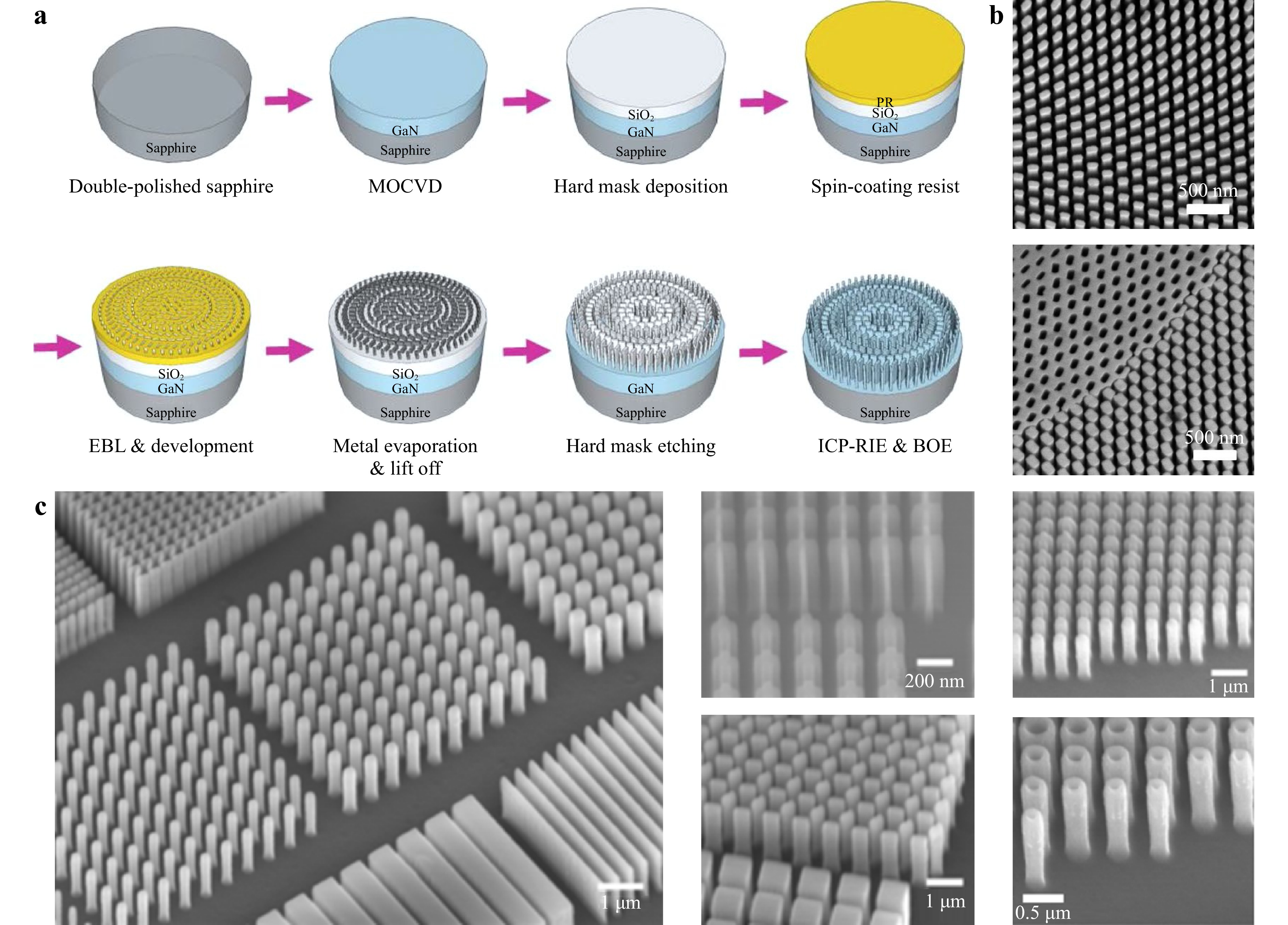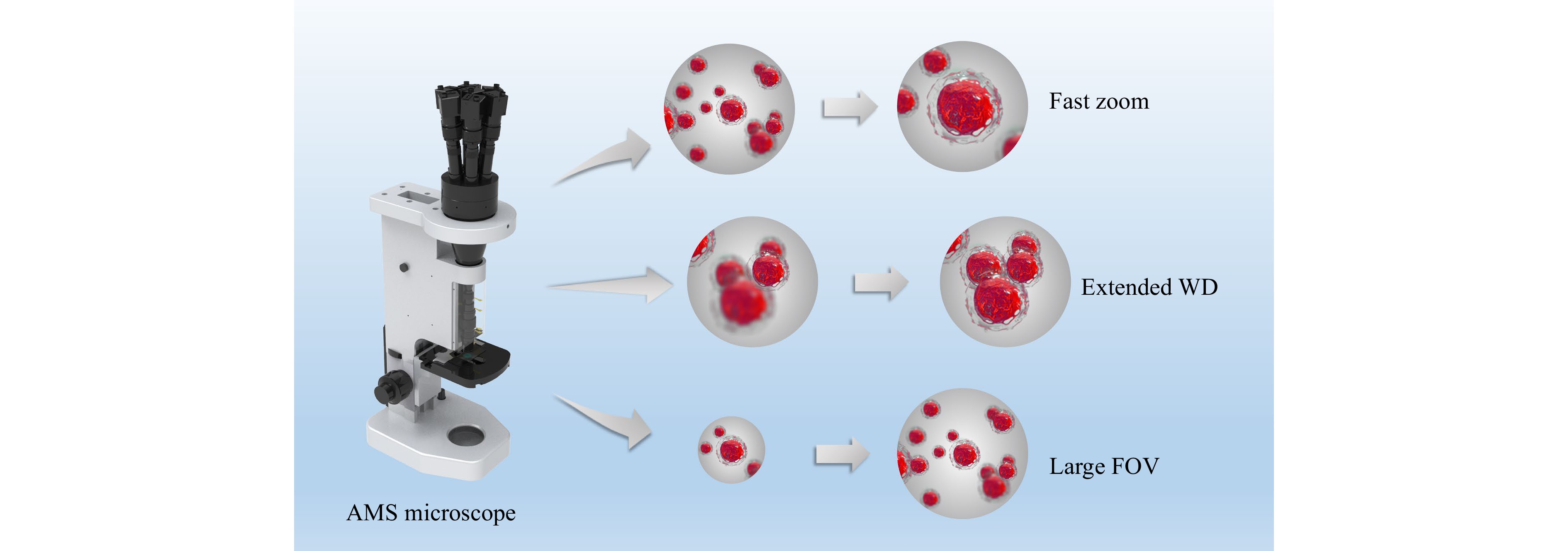Although optical microscopy is a widely used technique across various multidisciplinary fields for inspecting small-scale objects, surfaces or organisms, it faces a significant limitation: the lateral resolution of optical microscopes is fundamentally constrained by light diffraction. Dielectric micro-spheres, however, offer a promising solution to this issue as they are capable of significantly enhancing lateral resolution through extraordinary phenomena, such as a photonic nanojet.Building upon the potential of dielectric micro-spheres, this paper introduces a novel approach for fabricating 3D micro-devices designed to enhance lateral resolution in optical microscopy. The proposed 3D micro-device comprises a modified coverslip and a micro-sphere, facilitating easy handling and integration into any existing optical microscope. To manufacture the device, two advanced femtosecond laser techniques are employed: femtosecond laser ablation and multi-photon lithography. Femtosecond laser ablation was employed to create a micro-hole in the coverslip, which allows light to be focused through this aperture. Multi-photon lithography was used to fabricate a micro-sphere with a diameter of 20 µm, along with a cantilever that positions the above the processed micro-hole and connect it with the coverslip. In this context, advanced processing strategies for multi-photon lithography to produce a micro-sphere with superior surface roughness and almost perfect geometry (λ/8) from a Zr-based hybrid photoresist are demonstrated. The performance of the micro-device was evaluated using Mirau-type coherence scanning interferometry in conjunction with white light illumination at a central wavelength of 600 nm and a calibration grid (Λ = 0.28 µm, h > 50 nm). Here, the 3D micro-device proved to be capable of enhancing lateral resolution beyond the limits achievable with conventional lenses or microscope objectives when used in air. Simultaneously, it maintained the high axial resolution characteristic of Mirau-type coherence scanning interferometry. The results and optical properties of the micro-sphere were analyzed and further discussed through simulations.
The field-of-view (FOV), depth of field, and resolution of conventional microscopes are constrained by each other; therefore, a zoom function is required. Traditional zoom methods lose real-time performance and have limited information throughput, severely limiting their application, especially in three-dimensional dynamic imaging and large-amount or large-size sample scanning. Here, an adaptive multiscale (AMS) imaging mechanism combining the benefits of liquid lenses and multiscale imaging techniques is proposed to realize the functions of fast zooming, wide working distance (WD) range and large FOV on a self-developed AMS microscope. The design principles were revealed. Moreover, a nonuniform-distortion-correction algorithm and a composite patching algorithm were designed to improve image quality. The continuous tunable magnification range of the AMS microscope is from 9× to 18×, with the corresponding FOV diameters and resolution ranging from 2.31 to 0.98 mm and from 161 to 287 line-pairs/mm, respectively. The extended WD range is 0.8 mm and the zoom response time is 38 ms. Experiments demonstrated the advantages of the proposed microscope in pathological sample scanning, thick-sample imaging, microfluidic process monitoring, and the observation of living microorganisms. The proposed microscope is the first step towards zoom multiscale imaging technology and is expected to be applied in life sciences, medical diagnosis, and industrial detection.
One of the challenges in the field of multi-photon 3D laser printing lies in further increasing the print speed in terms of voxels/s. Here, we present a setup based on a 7 × 7 focus array (rather than 3 × 3 in our previous work) and using a focus velocity of about 1 m/s (rather than 0.5 m/s in our previous work) at the diffraction limit (40×/NA1.4 microscope objective lens). Combined, this advance leads to a ten times increased print speed of about 108 voxels/s. We demonstrate polymer printing of a chiral metamaterial containing more than 1.7 × 1012 voxels as well as millions of printed microparticles for potential pharmaceutical applications. The critical high-quality micro-optical components of the setup, namely a diffractive optical element generating the 7 × 7 beamlets and a 7 × 7 lens array, are manufactured by using a commercial two-photon grayscale 3D laser printer.
Femtosecond laser fabrication technology has been applied to photonic-lantern mode (de)multiplexer for recent years, which is popular for its advantage of three-dimensional fabrication capability. The current designs of photonic-lantern mode (de)multiplexer based on femtosecond laser fabrication technology mostly follow the fiber-type photonic-lantern design, which use trajectory-symmetry structures with nonuniform waveguides for selective mode excitation. However, the nonuniform waveguides could lead to inconsistent waveguide transmission losses and coupling losses. The trajectory-symmetry designs are also inefficient for selective mode excitation. Hence, we optimize the design by using trajectory-asymmetry with uniform waveguides and fabricate superior ultrafast laser inscribed photonic-lantern mode (de)multiplexers. The consistent waveguide transmission losses of 0.1 dB/cm and coupling losses of 0.2 dB/facet at 1550 nm are obtained on the uniform single-mode waveguides. Based on the trajectory-asymmetry design for photonic-lantern mode (de)multiplexer, efficient modes excitation (
,
, and
) with average insertion losses as low as 1 dB at 1550 nm are achieved with the mode dependent losses less than 0.3 dB. The photonic lantern design is polarization insensitive with the polarization determined losses are less than 0.2 dB. Along with polarization multiplexing realized by fiber-type polarization beam splitters, six signal channels (
,
,
,
,
, and
), each of which carries 42 Gaud/s quadrature phase shift keying signal, are transmitted through the few-mode fiber for optical transmission. The average insertion losses of the system are less than 5 dB. The maximum crosstalk of the system with few-mode fiber is less than -12 dB, leading to a power penalty of 4 dB. This work paves the way for the practical application of 3D integrated photonic chip in high-capacity optical transmission systems.
In this study, a ray tracing model based on the law of reflection in vector form was developed to obtain the design parameters of multipass cells (MPC) with dense spot patterns. Four MPCs with distinct patterns were obtained using an established mathematical model. An MPC with a four-concentric-circle pattern exhibited the longest optical path length (OPL) of approximately 38 m and an optimal ratio of optical path length to volume (RLV) of 13.8 cm-2. A light-induced thermoelastic spectroscopy (LITES)-based methane (CH4) sensor was constructed for the first time using the developed optimal MPC and Raman fibre amplifier (RFA). A novel trapezoidal-tip quartz tuning fork (QTF) was used as the detector to further improve the sensing performance. The CH4-LITES sensor exhibited an excellent linear response to optical power and CH4 concentration. The minimum detection limit (MDL) of the CH4-LITES sensor reached 322 ppb when the output optical power of the RFA was 350 mW. The Allan deviation of the system indicated that the MDL decreased to 59.5 ppb when the average time was increased to 100 s.
Water monitoring, environmental analysis, cell culture stability, and biomedical applications require precise pH control. Traditional methods, such as pH strips and meters, have limitations: pH strips lack precision, whereas electrochemical meters, although more accurate, are fragile, prone to drift, and unsuitable for small volumes. In this paper, we propose a method for the optical detection of pH based on a multiplexed sensor with 4D microcavities fabricated via two-photon polymerization. This approach employs pH-triggered reversible variations in microresonator geometry and integrates hundreds of dual optically coupled 4D microcavities to achieve the detection limit of 0.003 pH units. The proposed solution is a clear example of the use-case-oriented application of two-photon polymerized structures of high optical quality. Owing to the benefits of the multiplexed imaging platform, the dual 4D microresonators can be integrated with other microresonator types for pH-corrected biochemical studies.
Herein, we have explored the recombination dynamics and defect concentration of a mixed cation mixed halide perovskite Cs0.17FA0.83PbI1.8Br1.2 with 1.75 eV bandgap after exposure to a gamma-ray source (2.5 Gy/min). We used photoluminescent spectroscopy to observe changes in recombination dynamics on perovskite films, impedance spectroscopy to reveal the contribution of interface recombination, and admittance spectroscopy to define the activation energy and concentration of defects. It was revealed that moderate doses (up to 10 kGy) passivate defects with activation energy ≈ 0.5 eV and at the same time form new defects that cause dramatic growth of the diffusion coefficient and migration of mobile ions. These two processes with opposite direction result in high radiation tolerance of the studied material and solar cells up to 10 kGy. Doses above 10 kGy are detrimental for perovskite solar cells, mainly due to the growing role of interface recombination. The results encourage the use of the wide bandgap perovskite Cs0.17FA0.83PbI1.8Br1.2 as a material for tandem solar cells with potential applications in a space environment.
Laser direct writing employing multi-photon 3D polymerisation is a scientific and industrial tool used in various fields such as micro-optics, medicine, metamaterials, programmable materials, etc., due to the fusion of high-throughput and fine features down to hundreds of nm. Some limitations of technology applicability emerge from photo-resin properties, however any material modifications can strongly affect its printability, as photoexcitation conditions alter as well. Here we present wavelength-independent 3D polymerisation using low peak power laser oscillators. High pulse repetition rate and fast laser direct writing was employed for advancing additive manufacturing out of the SZ2080TM photo-resist without any photo-initiator. Wavelengths of 517 nm, 780 nm, and 1035 nm are shown to be suitable for producing 300 nm polymerized features even at high – up to 105 µm/s– writing speeds. Variation of organic-inorganic ratio in hybrid material results in shift and decrease of the dynamic fabrication window, yet not prohibiting the photo-structuring. Controlled energy deposition per focal volume is achieved due to localized heating enabling efficient 3D printing. Such spatio-selective photo-chemical cross-linking widens optical manufacturing capacity of non-photo-sensitive materials.
Fiber-based endoscopes are promising for minimally invasive in vivo biomedical diagnostics. Multicore fibers offer high resolution imaging. However, to avoid image deterioration induced by inter-core coupling, significant spacing between cores is required, which limits the active image guiding area of the fiber. Thus, they suffer from low light collection efficiency and decreased signal-to-noise ratio. In this paper, we present a method to increase the collection efficiency by thermally expanding the cores at the facet of a multicore fiber. This expansion is based on the diffusion of doping material of the cores, thus the fiber’s original outer diameter is preserved. By enlarging the core diameter by a factor of 2.8, we increase the intensity of the transmitted light by a factor of up to 2.3. This results in a signal-to-noise ratio increase by a factor of up to 4.6 and significant improvement in the image contrast. The improvement increases with increasing working distance but is already prominent for as small working distance as 0.5 mm. The feasibility of the method is proved experimentally by lensless single-shot imaging of a test chart and incoherent light reflected from clusters of microbeads. The demonstrated approach is an important tool especially in imaging of biological specimens, for which phototoxicity must be avoided, and therefore, high collection efficiency is required.
The transport of intensity equation (TIE) is a well-established phase retrieval technique that enables incoherent diffraction limit-resolution imaging and is compatible with widely available brightfield microscopy hardware. However, existing TIE methods encounter difficulties in decoupling the independent contributions of phase and aberrations to the measurements in the case of unknown pupil function. Additionally, spatially nonuniform and temporally varied aberrations dramatically degrade the imaging performance for long-term research. Hence, it remains a critical challenge to realize the high-throughput quantitative phase imaging (QPI) with aberration correction under partially coherent illumination. To address these issues, we propose a novel method for high-throughput microscopy with annular illumination, termed as transport-of-intensity QPI with aberration correction (TI-AC). By combining aberration correction and pixel super-resolution technique, TI-AC is made compatible with large pixel-size sensors to enable a broader field of view. Furthermore, it surpasses the theoretical Nyquist-Shannon sampling resolution limit, resulting in an improvement of more than two times. Experimental results demonstrate that the half-width imaging resolution can be improved to ~345 nm across a 10× field of view of 1.77 mm2 (0.4 NA). Given its high-throughput capability for QPI, TI-AC is expected to be adopted in biomedical fields, such as drug discovery and cancer diagnostics.
Early diagnosis of brain tumors is often hindered by non-specific symptoms, particularly in eloquent brain regions where open surgery for tissue sampling is unfeasible. This limitation increases the risk of misdiagnosis due to tumor heterogeneity in stereotactic biopsies. Label-free diagnostic methods, including intraoperative probes and cellular origin analysis techniques, hold promise for improving diagnostic accuracy. Polarimetry offers valuable information on the polarization properties of biomedical samples, yet it may not fully reveal specific structural characteristics. The interpretative scope of polarimetric data is sometimes constrained by the limitations of existing decomposition methods. On the other hand, dynamic laser speckle analysis (DLSA), a burgeoning technique, not only does not account for the polarimetric attributes but also is known for tracking only the temporal activity of the dynamic samples. This study bridges these gaps by synergizing conventional polarimetric imaging with DLSA for an in-depth examination of sample polarization properties. The effectiveness of our system is shown by analyzing the collection of polarimetric images of various tissue samples, utilizing a variety of adapted numerical and graphical statistical post-processing methods.
Carbon dots (CDs) have shown great potential for application in optoelectronics, owing to their merits of tunable fluorescence, biocompatibility, low toxicity, and solution processability. However, the intrinsic nature of CDs makes them prone to fluorescence quenching in the aggregated state. In addition, the emission peak width at half maximum of a single CD is usually greater than 60 nm, and the emission spectra may exhibit a multi-peak superposition state, resulting in poor monochromaticity. Further, the unsatisfactory quantum yield of CDs restricts their further application. Considering this, doping strategies have successfully improved the electrical, optical, and chemical properties of CDs. The intrinsic structure and electron distribution of CDs can be effectively adjusted by metal or nonmetal doping. Doping atoms generate n- or p-type charge carriers, changing the bandgap energy, and thereby improving the photophysical properties of the CDs. In this comprehensive review, we explore the intricate effects of various doping strategies on CDs and systematically categorize them. Notably, we elaborate on the diverse types of doped CDs and emphasize their photophysical properties, aiming to elucidate the fundamental mechanisms underlying the influence of doping on CD performance. Specifically, this review describes the extensive applications of doped carbon dots (X-CDs) in optoelectronic devices, information encryption, anti-counterfeiting measures, imaging techniques, and detection fields, to spur further X-CD exploration and application.
Nano-kirigami technology enables the flexible transformation of two-dimensional (2D) micro/nanoscale structures into three-dimensional (3D) structures with either open-loop or close-loop topological morphologies, and has aroused significant interest in the fields of nanophotonics and optoelectronics. Here, we propose an innovative kissing-loop nano-kirigami strategy, wherein 2D open-loop structures can transform into 3D kissing-loop structures while retaining advantages such as large deformation heights and multiple optical modulations. Benefited from the unidirectional deformation of the structures, the kissing-loop nano-kirigami exhibits significant asymmetric transmission under x-polarized light incidence. Importantly, the Pancharatnam-Berry geometric phase is experimentally realized in nano-kirigami structures for the first time, resulting in broadband anomalous reflection in the near-infrared wavelength region. The kissing-loop nano-kirigami strategy can expand the existing platform of micro/nanoscale fabrication and provide an effective method for developing optical sensing, spatial light modulations, and optoelectronic devices.
We established a complete model and relationship between laser source characteristics and measurement accuracy of high precision fiber microprobe sensor (FMS) based on phase generated carrier demodulation. The laser carried out high-bandwidth frequency modulation to improve the measurement speed. Meanwhile, the laser also carried out large-amplitude frequency modulation to eliminate tens of nanometers of nonlinear error, thus improving the measurement accuracy. Further, the laser center wavelength is required to be stabilized under the above modulation to achieve a high measurement stability. The conflict between laser frequency modulation and central stability is revealed and analyzed alongside the distortion of measurement accuracy. A modified frequency stabilization method for laser source under high-bandwidth and large-amplitude modulation is proposed for improving measurement accuracy to realize sub-nanometer precision. The experimental results showed that when the modulation bandwidth was 1 MHz and maximum modulation amplitude was 2.61 GHz, the distributed feedback laser central wavelength stability was 2.9 × 10−10 (τ = 1s) according to Allan variance. Additionally, the relative expanded uncertainty of the laser wavelength was demonstrated to be superior to 5 × 10−8 (k = 2) within 3 hr, which was at least one order of magnitude higher than that of the traditional method. The resolution and stability of FMS is better than 0.4 nm, and the nonlinear error is reduced from tens of nm to 0.8 nm, which meets the requirements of sub-nanometer measurements.
To fulfill the requirements of high-precision common baseline measurement for multiple parameters, such as surface profiling and the curvature radius of large-aperture optical elements on the same instrument, this paper proposes a research on a high-precision large-aperture laser differential confocal-interferometric measurement method. This method is based on the principle of laser differential confocal combined with interferometry. It utilizes a Galilean double-reflection collimation system to generate well large-aperture collimated beams and employs mechanical phase-shifting technology for large-aperture and heavy-load reference lenses to overcome the flaws of existing large-aperture wavelength-tuning phase shifting technology in theory, thus achieving high-precision and high-stable phase-shifting interference in large-aperture surface profiling measurements. By utilizing the laser differential confocal method with anti-scattering and anti-interference properties, high-precision common baseline measurements are achieved for the multiple-parameter of optical elements such as ultra-long focal lengths and ultra-large curvature radii. The measurements of large-aperture surface profiles, the mean PV was 46.0 nm. For the ultra-long focal length, the relative standard deviation was 0.019%, whereas for the ultra-large curvature radius, the relative standard deviation was 0.0036%. This method enables high-precision, high-stable, and high-efficient common baseline measurements for the multiple parameters of optical elements with large, medium, and small apertures thereby providing an effective technical approach for improving the detection and machining precision of optical elements.
Laser polishing (LP) is considered an effective method for generating ultrasmooth surfaces owing to its precision, flexibility, and material compatibility. However, a lack of understanding of the evolution of surface topography during LP significantly limits the achievable surface roughness in practice. In this work, for the first time, by employing optical time-stretch quantitative interferometry (OTS-QI), we recorded the entire evolution of surface topography during LP with nanosecond-level temporal resolution, providing insight into the mechanisms involved in the surface roughness evolution, such as the Marangoni effect and the formation mechanism of mid-frequency waviness (MFW). Assisted by numerical calculations, we reveal that a ‘perfect polishing point’ exists, i.e., the optimal interaction time for LP at a specific laser power density, at which the surface roughness can be minimised without the formation of an MFW owing to the Marangoni effect and non-uniform removal. This OTS-QI system harnesses the rapid repetition rate of femtosecond lasers, achieving a remarkable measurement speed exceeding 100,000,000 times per second while preserving a measurement accuracy comparable to that of existing white light interferometers (WLIs), setting a new benchmark as the fastest recorded roughness measurement. In addition to LP, the proposed method can be applied for real-time and in situ monitoring of many machining scenarios involving highly dynamic phenomena.
Silicon photonics is currently the leading technology for the development of compact and low-cost photonic integrated circuits. However, despite its enormous potential, certain limitations, such as the absence of a linear electro-optical (EO) effect because of the symmetric crystal structure of silicon remain. In contrast, barium titanate (BTO) exhibits a strong Pockels effect. In this study, we demonstrated a high-quality transferred barium titanate ferroelectric hybrid integrated modulator on a silicon-on-insulator platform. The proposed hybrid integration of BTO on silicon Mach-Zehnder interferometers exhibited EO modulation with a VπL as low as 1.67 V·cm, thereby facilitating the realisation of compact EO modulators. The hybrid integration of BTO with SOI waveguides is expected to pave the way for the development of high-speed and high efficiency EO modulators.
Side-pumping fibre combiners offer several advantages in fibre laser design, including distributed pump absorption, reduced heat load, and improved flexibility and reliability. These benefits are particularly important for all-fibre lasers and amplifiers operating in the mid-IR wavelength range and based on soft-glass optical fibres. However, conventional fabrication methods face limitations due to significant differences in the thermal properties of pump-delivering silica fibres and signal-guiding fluoride-based fibres. To address these challenges, this work introduces a design for a fuse-less side-polished (D-shaped) fibre-based pump combiner comprising multimode silica and double-clad fluoride-based fibres. The results demonstrate stable coupling efficiency exceeding 80% at a 980-nm wavelength over 8 hours of continuous operation under active thermal control. The developed pump combiner has also been successfully integrated into a linear Er-doped fibre laser cavity, showing continuous-wave generation at 2731 or 2781-nm central wavelength with an output power of 0.87 W. Overall, this innovative approach presents a simple, repeatable, and reproducible pump combiner design that opens up new possibilities for leveraging fibre-based component technology in soft glass matrices and other emerging fibres with unique compositions.
Compact micro-spectrometers have gained significant attention due to their ease of integration and real-time spectrum measurement capabilities. However, size reduction often compromises performance, particularly in resolution and measurable wavelength range. This work proposes a computational micro-spectrometer based on an ultra-thin (~250 nm) detour-phased graphene oxide planar lens with a sub-millimeter footprint, utilizing a spectral-to-spatial mapping method. The varying intensity pattern along the focal axis of the lens acts as a measurement signal, simplifying the system and enabling real-time spectrum acquisition. Combined with computational retrieval method, an input spectrum is reconstructed with a wavelength interval down to 5 nm, representing a 5-time improvement compared with the result when not using computational method. In an optical compartment of 200 μm by 200 μm by 450 μm from lens profile to the detector surface, the ultracompact spectrometer achieves broad spectrum measurement covering the visible range (420−750 nm) with a wavelength interval of 15 nm. Our compact computational micro-spectrometer paves the way for integration into portable, handheld, and wearable devices, holding promise for diverse real-time applications like in-situ health monitoring (e.g., tracking blood glucose levels), food quality assessment, and portable counterfeit detection.
In the past several decades, photonic integrated circuits (PICs) have been investigated using a variety of different waveguide materials and each excels in specific key metrics, such as efficient light emission, low propagation loss, high electro-optic efficiency, and potential for volume production. Despite sustained research, each platform shows inherit shortcomings that as a result stimulate studies in hybrid and heterogeneous integration technologies to create more powerful cross-platform devices. This is to combine the best properties of each platform; however, it requires dedicated development of special designs and additional fabrication processes for each different combination of material systems. In this work, we present a novel hybrid integration scheme that leverages a 3D-nanoprinted interposer to realize a photonic chiplet interconnection system. This method represents a generic solution that can readily couple between chips of any material system, with each fabricated on its own technology platform, and more importantly, with no change in the established process flow for the individual chips. A fast-printing process with sub-micron accuracy is developed to form the chip-coupling frame and fiber-guiding funnel, achieving a mode-field-dimension (MFD) conversion ratio of up to 5:2 (from a SMF28 fiber to 4 µm × 4 µm mode in polymer waveguide), which, to the best of our knowledge, represents the largest mode size conversion using non-waveguided 3D nanoprinted components. Furthermore, we demonstrate such a photonic chiplet interconnection system between silicon and InP chips with a 2.5 dB die-to-die coupling loss, across a 140 nm wavelength range between 1480 nm to 1620 nm. This hybrid integration plan can bridge different waveguide materials, supporting a much more comprehensive cross-platform integration.

ISSN 2689-9620 EISSN 2831-4093
Indexed by:
- ESCI
- DOAJ
- Scopus
- Google Scholar
- CNKI
-
2021, 2(3): 350-369. doi: 10.37188/lam.2021.024
-
2021, 2(3): 313-332. doi: 10.37188/lam.2021.020
-
2023, 4(4): 519-542. doi: 10.37188/lam.2023.031
-
2021, 2(4): 446-459. doi: 10.37188/lam.2021.028
-
2021, 2(1): 59-83. doi: 10.37188/lam.2021.005































 Email
Email RSS
RSS




